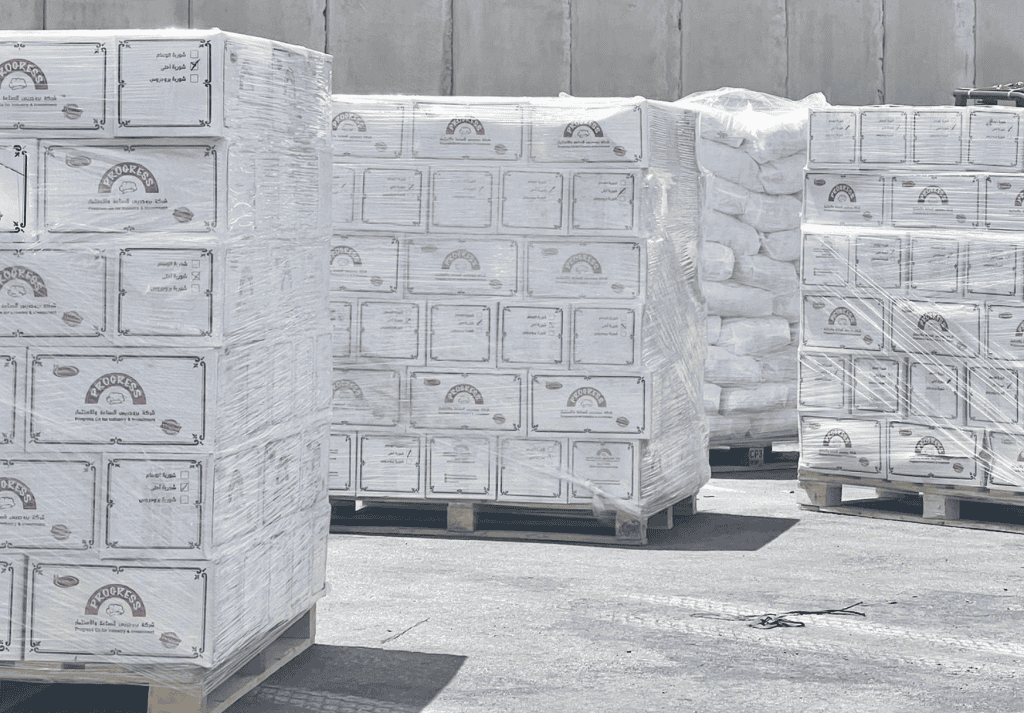
As the Israel Defense Forces press forward in southern, central and northern Gaza, the issue of humanitarian aid remains front and center not just for the Israeli defense establishment but for other countries and groups active in Gaza. US Central Command says that 569 metric tons of aid have been delivered to Gaza via a new pier that became operational in mid-May. However, it is not clear how much of the aid is actually reaching the people it is designed for in Gaza.
“The United States, United Kingdom, UAE, European Union, and many other partners have donated this humanitarian assistance. The pier is a temporary solution to surge humanitarian assistance to Gaza to meet the urgent needs of the Palestinian people,” US Central Command said on May 20. However, on May 21 Pentagon Press Secretary Maj. Gen. Patrick Ryder told reporters that some of the aid was “intercepted” and that it did not get to the people it was intended for.
Meanwhile, Israel’s Coordinator for Government Activities in the Territories (COGAT), which coordinates humanitarian aid entering Gaza, noted on May 21 that 451 trucks had crossed into Gaza via two border crossings in the last 24-hours. These included trucks moving through the southern Kerem Shalom crossing and the northern Erez West crossing. Erez West is near the Israeli community of Zikim and is located next to two IDF facilities that are near the beach just north of Gaza. The crossing was created by Israel to bring more aid into Gaza. A new road was paved next to the IDF facilities and a parking lot carved out of the sand dunes so that trucks could move easily to the border. Erez West saw 70 trucks of the 451 pass through on May 21 indicating it is still being underutilized, likely because there is no one to facilitate movement on the other side.
Trucks arrive from a number of sources now, including via the port of Ashdod and as well as via Jordan. In some cases Israeli activists have tried to prevent the trucks from reaching Gaza, causing many transfers to take place at night. According to COGAT a total of 12 trucks arrived via the US-built floating pier on May 21. The pier is attached to the coast south of Gaza and adjoins the IDF-controlled Netzarim corridor. There is a 67-acre site that has been flattened on shore so the trucks can offload pallets for delivery into Gaza. The trucks arrive at the floating pier from small ships that transit back and forth to a separate floating dock that is off-shore. In turn, the goods arrive at that dock from Cyprus. It’s a complex operation and is still in its early stages with kinks remaining to be ironed out. COGAT said late on May 21 that there are now 650 trucks waiting on the Gazan side of the crossings. What this indicates is that they are not being moved into Gaza by humanitarian organizations that are supposed to distribute the aid to Gaza. “These trucks are awaiting distribution due to the lack of logistical capabilities and manpower gaps in the international aid agencies, leading to the accumulation of humanitarian aid at the crossings,” COGAT said.
The humanitarian focus has been at the forefront of Israel Defense Minister Yoav Gallant’s statements on Gaza in recent months. He said on May 20 that the IDF had made significant efforts to provide humanitarian services and to use precision in operations so as to avoid harm to civilians. However, the complexities of the war and Hamas’ continued control of much of Gaza means that aid passes into Hamas control when it leaves the crossings or IDF-controlled areas. Hamas continues to control the central Gaza camps area, and it has a presence in Gaza City in the north, as well as Khan Younis, which the IDF left in April.







